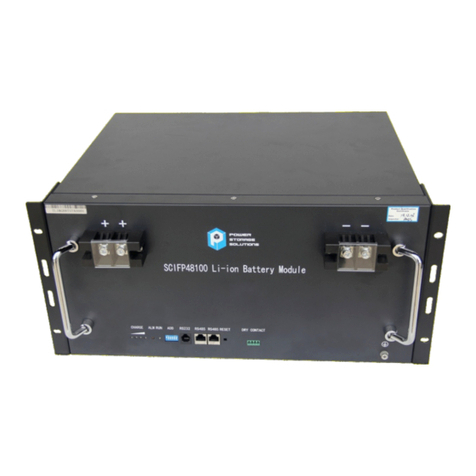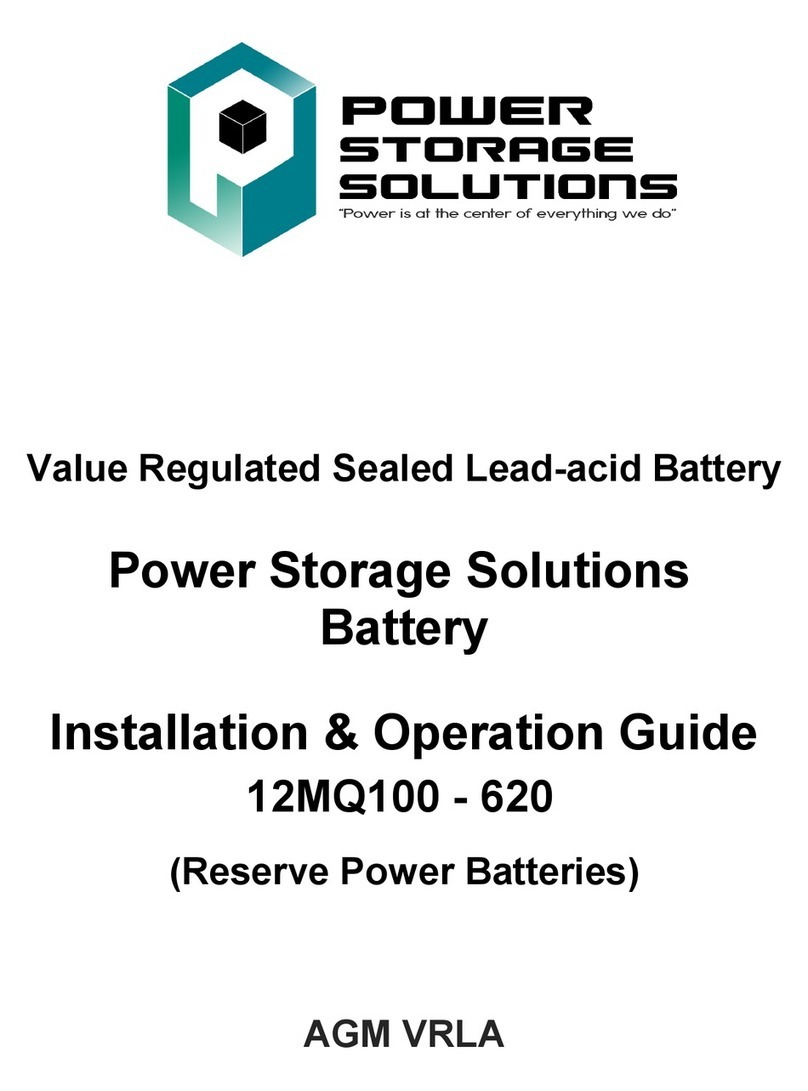
Cells in Parallel Strings
When using a constant voltage charger, ensure that the connections from the
charger at the end of each string have the same electrical resistance.
There is no theoretical limit on the number of strings that can be used in parallel.
However, there might be practical limits on the number of parallel strings such as
short circuit current limits, cable resistances and charger current limitations.
Charging
Float Voltage
The float/charge voltage is 2.265 VPC (+/- 0.015 V) at 77° F (25° C).
When the average ambient temperature deviates more than ± 9° F (5° C) from the
reference, it is necessary to adjust the float voltage as follows:
2.33 to 2.36 VPC at 32° F (0° C)
2.30 to 2.33 VPC at 50° F (10° C)
2.27 to 2.30 VPC at 68° F (20° C)
2.25 to 2.28 VPC at 77° F (25° C) (reference)
2.23 to 2.26 VPC at 86° F (30° C)
2.22 to 2.25 VPC at 95° F (35° C)
Due to the phenomena of gas recombination, a difference of ± 2% (earlier in float life
± 5% is common) for an individual cell voltage can be observed. However, the total
voltage of the battery shall be within the limits stated above.
Equalization Change
Periodic equalizing is not normally required to correct cell/unit imbalance.
Equalize charging should not be performed unless specifically recommended by
Power Storage Solutions. Please consult Power Storage Solutions before applying
and equalization change.
Ripple Current
Unacceptable levels of ripple current from the charger or the load can cause
permanent damage and a reduction in service life. It is recommended to limit the
continuous ripple current to the values of the Table 1 (in amperes).
Charging Current
The recommended charging method for 12 MQ batteries is current limited,
constant voltage charging. Refer to Table 1 for the current limits for each
battery model.
State of Charge
The battery state of charge can be determined approximately by measuring the
open circuit voltage after the battery has been at rest (off charge) for a minimum
of 24 hours at 77° F (25° C).
Discharging
End of Discharge Voltage
The end of discharge voltage must be limited to 1.60 VPC.
A protective system should be installed to prevent deep discharge.
Discharged Cells
MQ batteries must not be left in a depleted state after discharge. They
should be immediately recharged to a fully charged condition.
Failure to observe these conditions may result in greatly reduced service life
and unreliability.
Accidental Deep Discharge
When the battery is completely discharged, the sulfur from the dilute sulfuric acid
is completely absorbed in the plates and the remaining electrolyte consists only
of water.
At this point, the sulfation of the plates is at its maximum, considerably increasing
the cell’s internal resistance.
Important notice: This type of deep discharge will provoke a premature
deterioration of the battery and a noticeable effect on life expectancy.
The Effect of Temperature on Capacity
Correction factor of the capacity, according to temperature.
Maintenance and Records
12 MQ batteries are absorbed electrolyte, lead-acid type and need no water
addition. These batteries are equipped with self-resealing, flame-arresting safety
vents.
The containers and lids shall be kept dry and free from dust. Cleaning must be done
only with a damp cotton cloth. Check monthly that total voltage at battery terminals,
while on float, is (N x 2.25 to 2.28 V) for a temperature of 77° F (25° C), (where N is
the number of cells in the battery). Upon initial installation, the battery unit date
codes and installation date should be recorded. In addition, individual battery unit
and string voltages, as well as, unit ohmic values (if practical) should be taken and
retained.
Every 12 months, read, measure and record the following:
Individual battery unit and string voltages
Battery unit internal ohmic values
Intercell connection resistance
Ambient temperature in the vicinity of the battery and the temperature,
take at the battery string negative post.
Keep a record (both hard and soft copy) of all measured values, load test and any
maintenance issues.
An autonomy check can be carried out once or twice a year.
The above record taking is the absolute minimum to protect the warranty.
This data will be required for all warranty claims.
For temperature correction factors for use when load testing a
battery, please refer to the Temperature Correction factor tables
published in IEEE Standard 1188, latest version.























